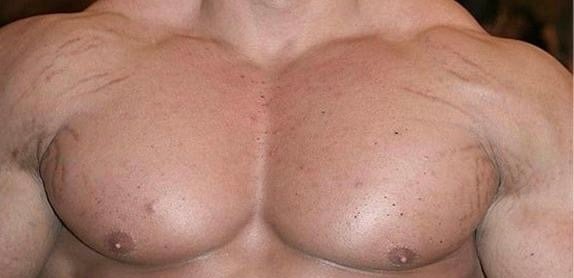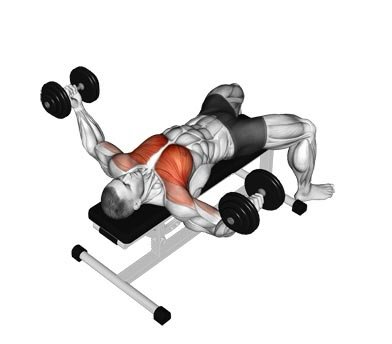Stretch marks, or “striae,” are a common concern for many individuals undergoing significant weight loss. While shedding excess weight brings numerous health benefits, it may leave behind these unsightly lines on the skin, causing many to feel self-conscious about their appearance. Understanding why stretch marks occur and how to prevent and treat them is crucial for anyone embarking on a weight loss journey.
In this article, we will explore what causes stretch marks, the best ways to prevent them during weight loss, and effective treatments to minimize their appearance. Whether you’re looking to prevent stretch marks or reduce their visibility, this guide will provide you with the essential knowledge to maintain smooth and healthy skin.
What Are Stretch Marks?
Stretch marks are long, narrow streaks or lines that develop when the skin stretches or shrinks too quickly, causing the collagen and elastin (proteins that keep skin firm and elastic) to rupture. This sudden change leads to the formation of scar tissue, which appears as red, purple, or dark-colored marks, depending on skin tone. Over time, stretch marks can fade to a lighter, silvery color.
They commonly occur in areas where fat is stored, such as the abdomen, thighs, buttocks, arms, and breasts. Although stretch marks are often associated with pregnancy, they can develop during rapid weight loss or gain, puberty, or even from bodybuilding.
Why Do Stretch Marks Occur During Weight Loss?

When losing weight, especially if done rapidly, the skin may struggle to adjust to the shrinking body mass. If the skin cannot contract as quickly as the underlying fat is lost, it may result in stretch marks. Other factors that contribute to the formation of stretch marks during weight loss include:
- Genetics: If your parents or close family members have stretch marks, you are more likely to develop them.
- Skin Elasticity: The ability of your skin to stretch and contract without damage varies from person to person.
- Hydration Levels: Dry skin is more prone to developing stretch marks. Hydrated skin tends to be more elastic and resilient.
- Age: Younger skin has more collagen and elastin, making it less likely to develop stretch marks. As we age, the skin loses elasticity, making it more susceptible to scarring.
How to Prevent Stretch Marks During Weight Loss
Although it may not be possible to completely prevent stretch marks, there are several strategies to minimize their occurrence during weight loss. Focusing on skin health and gradual weight reduction can greatly reduce the likelihood of developing stretch marks.
1. Lose Weight Gradually
Rapid weight loss increases the risk of developing stretch marks, as the skin doesn’t have enough time to adjust to the body’s shrinking mass. To prevent this, aim for a steady weight loss of about 1-2 pounds per week. This slower pace allows the skin to gradually contract and keeps it more elastic.
2. Stay Hydrated
Proper hydration is key to maintaining skin elasticity. Drink plenty of water daily to keep your skin hydrated from the inside out. Avoid excessive caffeine or alcohol consumption, as these can dehydrate the skin and make it more prone to damage.
3. Moisturize Your Skin Regularly
Keeping your skin moisturized can help improve its elasticity and reduce the chances of stretch marks forming. Look for creams or oils containing ingredients like cocoa butter, shea butter, vitamin E, and hyaluronic acid, which are known to nourish and hydrate the skin. Apply moisturizer to areas prone to stretch marks, such as the abdomen, thighs, and arms, twice a day.
4. Eat a Balanced Diet Rich in Skin-Nourishing Nutrients
Consuming a diet rich in vitamins and minerals that promote skin health is essential for preventing stretch marks. Focus on foods that contain:
- Vitamin C: This powerful antioxidant helps in the production of collagen, which strengthens the skin and helps prevent stretch marks. Citrus fruits, strawberries, and leafy greens are excellent sources.
- Zinc: Zinc is important for wound healing and maintaining healthy skin. It can be found in foods like nuts, seeds, legumes, and lean meats.
- Protein: Protein is necessary for skin repair and regeneration. Include lean meats, eggs, dairy, legumes, and nuts in your diet to support collagen production.
- Healthy Fats: Omega-3 fatty acids, found in fish, flaxseed, and walnuts, help keep the skin supple and elastic.
5. Exercise Regularly
Engaging in regular physical activity can help maintain skin firmness and prevent sagging, which may reduce the likelihood of stretch marks. Strength training exercises are particularly effective at toning the skin and muscles as you lose weight. Additionally, exercise improves circulation, bringing essential nutrients and oxygen to the skin.
How to Treat Stretch Marks After Weight Loss
If you already have stretch marks, don’t worry—there are effective treatments to help reduce their appearance. While stretch marks may never completely disappear, they can fade significantly with the right care and treatments.
1. Topical Treatments
Over-the-counter creams, lotions, and oils can help improve the appearance of stretch marks, especially if used during their early stages when they are still red or purple. Look for products containing ingredients such as:
- Retinoids (Tretinoin): Retinoids can stimulate collagen production and help fade early-stage stretch marks. However, they are not recommended for pregnant or breastfeeding women.
- Hyaluronic Acid: This powerful humectant helps the skin retain moisture, improving its elasticity and reducing the appearance of stretch marks.
- Vitamin C: Vitamin C serums can brighten the skin and improve collagen production, helping to lighten stretch marks over time.
2. Microdermabrasion
Microdermabrasion is a non-invasive procedure that involves exfoliating the top layer of the skin to encourage new skin cell growth and collagen production. This treatment can help reduce the appearance of stretch marks, especially older, silvery ones.
3. Laser Therapy
Laser treatments are highly effective in minimizing stretch marks by promoting collagen and elastin production in the deeper layers of the skin. There are different types of laser treatments, such as fractional laser therapy, which can improve the texture and color of stretch marks over multiple sessions.
4. Microneedling
Microneedling involves using tiny needles to create micro-injuries in the skin, stimulating collagen production and skin regeneration. This treatment is often used for stretch marks, as it can help improve skin texture and reduce the depth of scars.
5. Chemical Peels
Chemical peels use acids to exfoliate the outer layer of the skin, promoting new skin growth and reducing the appearance of stretch marks. Multiple sessions may be required to achieve optimal results, and it’s important to consult with a dermatologist to ensure the treatment is suitable for your skin type.
Conclusion
Stretch marks are a common side effect of weight loss, but they don’t have to be permanent. By taking preventative measures such as gradual weight loss, staying hydrated, and maintaining a healthy diet, you can reduce the chances of developing stretch marks. If stretch marks do appear, there are numerous treatments available—from topical creams to professional procedures—that can help fade them and improve your skin’s appearance.
Ultimately, achieving a healthier body through weight loss is a victory in itself, and maintaining healthy skin should be part of your journey to feeling confident and beautiful.





